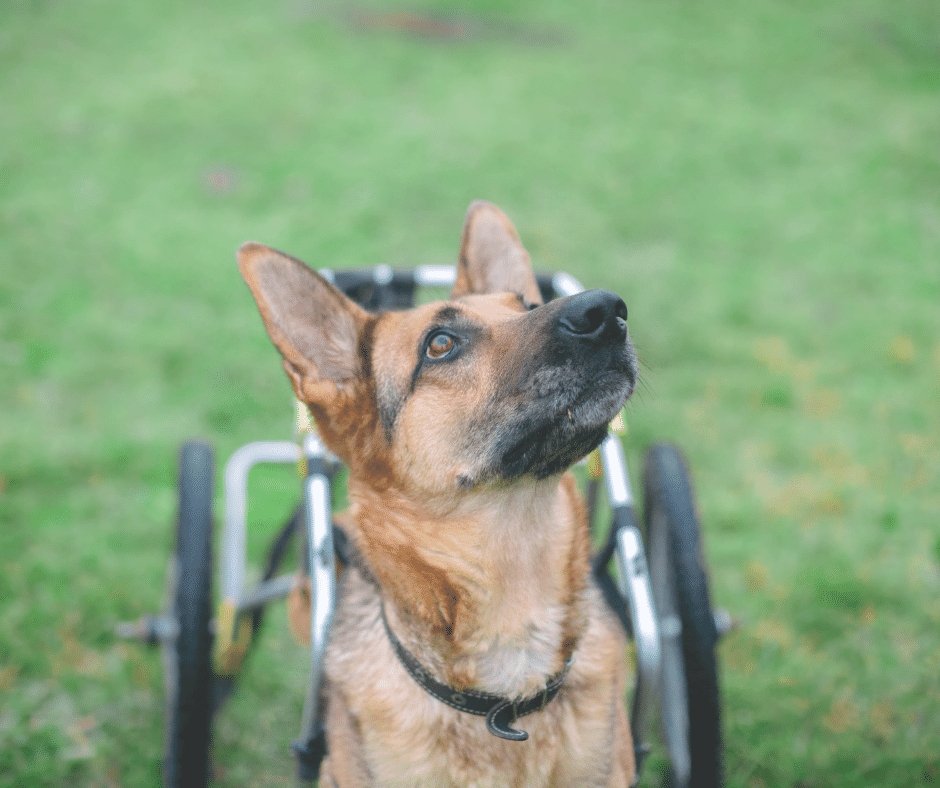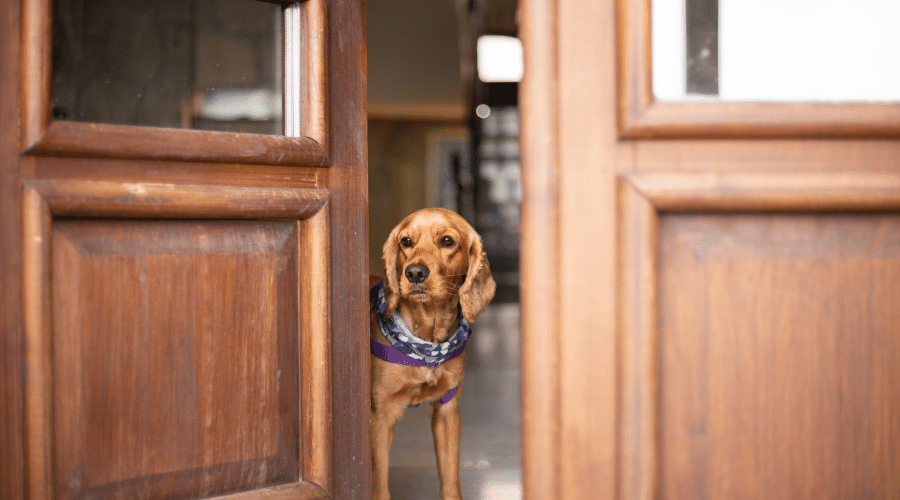GET 15% OFF WITH THE PUPPY BUNDLE
GET 15% OFF WITH THE PUPPY BUNDLE
Shop all

Easy Tips for Training Your Senior and Disabled Animals
February 15, 2022 5 min read
Senior and disabled animals don’t stop being your companion pets when they become old or disabled. On the contrary, you can still train them and teach them a few tricks if you want to.
As a dog parent for senior and disabled animals, here are several tips for training them and tricks that would be fun to teach them.
5 training tips for senior and disabled dogs
1) Do stretches.

Don’t forget to have your dogs do stretches before doing any physical activities. Stretches help dogs perform better in their tasks and are safer because they help the muscles to become limber.
You can also do the stretches even when your dog is lying down and has balance problems.
2) Train in short sessions.
Even with the importance of training, make sure to avoid overwhelming and overstimulating your senior and disabled animals with training. Otherwise, it might contribute to their physical and mental stress.
In this manner, short consistent lessons are a way to go. For instance, you can spend around 15-20 minutes training them twice a day, or you can even mix it with playtime.
3) Play searching game.

Searching game is the perfect game for your senior dogs, especially if they are starting to lose their sense of sight and hearing. This is a good training exercise because it is one of the standard training exercises that search-and-rescue dog owners use.
First, let your dog smell a bone or treat and place it somewhere they can easily see at the beginning of the game. Afterward, command your dog to find it. Repeat the process and gradually put treats in different places.
4) Always notice cues.
There will be times when animals with disabilities give cues about their training. You may not notice it, but you have to pick up these cues right away.
Check what they are doing and not doing during training sessions. For example, if you command them to sit and they don’t, then there is a high chance there may be something wrong with their legs or they’re feeling uncomfortable with the ground.
5) Practice verbal signals with hand signals.

Verbal signals are perfect for special animals going blind, while hand signals are helpful for those with weakening hearing.
Because of this, we advise that you teach both signals if you’re unsure what parts of your dog are getting weaker. Learning two signals may even become useful when the time comes.
10 cool dog tricks to teach senior and disabled animals
1) Put toys away.

A little trick you may want to teach your dog is picking up their toys after playing. Teaching this trick will make your dog help you clean up after playtime, too.
Picking up toys will also be a low-key way for them to be active and loosen up their stiff joints and muscles without straining their body.
2) Open the door.

You can start teaching them this trick by putting an object that can aid your dog in opening doors, like a cloth or a string. Let them show you grabbing that object several times so they can get an idea of what to do.
3) Touch.
Touch is an easy trick to teach your dog and is an excellent foundation for other tricks like coming back to you or flipping switches. What makes this perfect for older dogs is that it can start out simple and you can gradually build complexity for this trick if you want.
4) Find it.

You can teach your dog another trick through a game of finding something. This way, your senior dogs or disabled animals can use their nose to find treats and other rewards.
It’s an excellent trick to teach dogs who are losing their sight and hearing due to old age. Your dog gets to learn to use their sense of smell instead to find hidden toys or treats.
5) Back up.

Another fun trick to teach your senior dog is walking backwards! It’s a good way for them to think of using their bodies differently, which is good for both mental and physical agility.
It might come as a surprise, but not a lot of dogs are naturally aware of their rear end. With this trick, your furry best friend will learn to be aware of their hind legs and how they can use them more effectively.
6) Name objects.
If you’re concerned about your dog’s mental capabilities, one way you can help them hone them is by teaching them the names of various objects.
This trick is a great way to teach your dog to fetch certain items like toys or anything around the house, like shoes, blankets, keys, or even socks. It may take a while for them to grasp the names, but they will undoubtedly catch on in the long run.
7) Hold an item.

For disabled and senior dogs that love to play fetch and tug, it may be wise to teach them to catch and hold an object.
Teaching your dog to hold an object would help them think about how to hold their toys. Once they have the object in their grasp, they’ll learn to focus and wait when you want them to release the object.
8) Ring a bell.

If your senior or disabled animal is not yet house-trained, one trick you can use to make their life easier is to let them use a tool, like a bell, as a cue.
You can start by showing them what touching the bell means several times until they eventually learn that they can use it to go in or out of the house for potty breaks.
9) Tuck in bed.
A great trick for dogs at any age and a cozy trick for your senior dogs would be tucking themselves in bed. It would be fun to see your dog grabbing a blanket as a sign that they’ve learned to do so.
One way you can go about this is by teaching your dog to lie down on a blanket, grabbing the end of it, and having them roll over to tuck themselves in. This can be truly helpful for your senior dogs who love staying warm.
10) Fetch.

From teaching your dog to name objects, hold items, and open the door, it’s time to put these lessons altogether and teach them to fetch!
A simple way to start this trick is by teaching them to fetch their favorite toys or even their favorite blanket.
All in all
There are plenty of ways you can help train your senior dogs or special animals.
Hopefully, the training tips and tricks we’ve listed above will help you keep your senior and disabled animals in tip-top shape.





